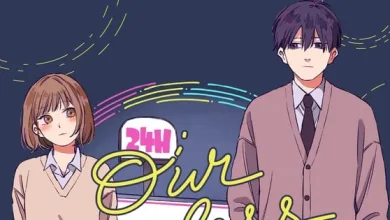Vampire Dormitory Anime Series Review – Review

Nakayoshi magazine has been home to some of the most influential shōjo manga series of all time: Princess Knight. Sailor Moon. Magic Knight Rayearth. The list goes on. The name is synonymous with shōjo; indeed, it is one of the oldest shōjo publications in existence. All of that is why it’s so confusing that their big 70th anniversary production was, of all things, Vampire Dormitory, a mess of popular shōjo tropes put together in a way that defies all good storytelling sense.
I’ve been struggling over how to write the summary for a good twenty minutes because when I write it out, there’s no logical flow to the events. It’s so packed with contrivances that trying to describe it in a way that makes sense feels like madness. Teenaged Mito is now homeless after spending most of their childhood being raised by relatives who didn’t love them. Mito ends up taken in by Ruka, who is looking for a thrall but wants a boy so that he can avoid falling in love with his source of sustenance. If he were to drink from a girl, he would run the risk of falling in love before meeting his destined partner, and after that, he’d never be able to find her. The problem is that despite appearing to be male, Mito is actually a girl.
Mito’s gender reveal party isn’t until the end of the first episode, but if you watch the Japanese version, you’ll figure that out the moment she first opens her mouth. Kana Ichinose, talented though she may be, isn’t even slightly passable as a boy. It doesn’t sound like she’s even trying, as she portrays Mito with the same highly feminine pitch and speech patterns that she does with every character. When watching the Japanese, my brain refused to accept that she was even trying to hide her gender from the world. Her cross-dressing is more convincing in English, as Nia Celeste uses a more gender-ambiguous, husky tone. That alone makes the dub worthwhile, but the cast is fairly strong across the board. Plus, it’s a lot easier to turn your brain off and let the weirdness wash over you in your native language, and trust me, that’s the best course of action with Vampire Dormitory.
When Mito, Ruka, and friends go on their obligatory camping trip in the third episode, I thought things were moving awfully fast; traditionally, that’s more of a middle-of-the-series moment. You know, so that the characters can strengthen the bonds they’ve already established, reveal emotional truths around the campfire, and revel in their youth as they cavort around with fireworks. We barely knew these characters, particularly the b-couple Juri and Takara, a pair of boys in Ruka and Mito’s class who also live in the dorms and work at the cafe. The previous episode ended with the appearance of Ren, the Rival Character™. Little did I know just how much the story was about to pop off.
I’ll refrain from describing the events, because I want anyone who decides to watch it based on this review to be as surprised as I was. There is truly no predicting what will happen next, because the story is unbound by the laws of conventional narrative logic or character writing. Every single episode had me hooting and hollering, screaming with laughter. On a couple occasions, I was moved to tears… of laughter. Sometimes it was the small things, like Mito’s wig’s tendency to pop off at convenient moments, allowing her hair to splay out in ways that defy the laws of physics (Girl, just cut your hair instead of wearing a wig 24/7! That can’t be comfortable!); sometimes it was characters making the most absurd decision possible in the moment. But no matter what, it was strange and delightful.
Nor do the various elements of the story come together into a cohesive whole. The cafe doesn’t really serve much narrative function to speak of. Juri keeps randomly offering Mito articles of women’s clothing that he happens to have, to the point that I was waiting for the reveal that he, too, is a girl in disguise. Every so often the story gives a nod to his crush on Takara, but it doesn’t bolster the main plot in any way and mostly feels like a distraction. Ruka is an otaku, but his secret shrine to magical girl anime gets dropped a few episodes in. Meanwhile, Ren is remarkably chill with developing feelings for a person he thinks is a man, rather than the expected gay panic subplot.
The animation is thoroughly mediocre, but that’s fine; a glossier production would likely detract from the pervasive sense of absurdity. Objects in motion tend to slide around, more like a static figure manipulated by video editing software than genuine animation. But the boys are pretty, and that’s what matters, right? Ruka and Ren are properly tall and sheltering against Mito’s slight figure, which is what the girlies want in this situation. The animation is limited enough to be unremarkable but never so bad that it’s distracting. Well, except for the fact that Ruka’s earrings are never in the same spot on his earlobe in two consecutive shots.
Vampire Dormitory is a strange choice for a 70th anniversary project, especially for a publication with as much history as Nakayoshi. I would have expected something more timeless or nostalgic, not a mishmash of shōjo trends with middling animation. However, even if it doesn’t carry the weight of, say Card Captor Sakura, you’re guaranteed to have a good time watching this, even if it’s not for the right reasons.
Source link
#Vampire #Dormitory #Anime #Series #Review #Review



